Check In
The Check In Asset function is used to check-in the assets currently checked-out to a customer, employee or vendor.
Assets can also be checked in on a Android and iOS device.
Note:
- The barcode labeled "scan for a quick check in" printed on the check out receipt is only for use with the Web application. The barcode cannot be used with a mobile device.
- Capture Transaction Geo Location Settings - If the Capture Transaction Geolocation is enabled, then the Geolocation - View Map link will appear on the History screen once you complete the Check-In transaction. Refer to History - View Map.
- Note on Custom Fields: If there are custom fields that are not filled and are marked as required and read-only, then the user without the Edit Read Only permission will not be able to add/edit the values in the custom field or move the asset to the queue. In this case, a notification message will appear indicating to the user that the administrator has marked this field as read-only. Refer to the topic Edit Read Only Fields for more details.
- Click on the Transactions > Check In.
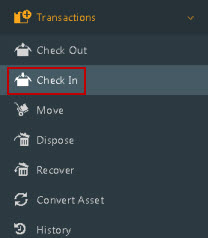
- The Check In screen will appear.
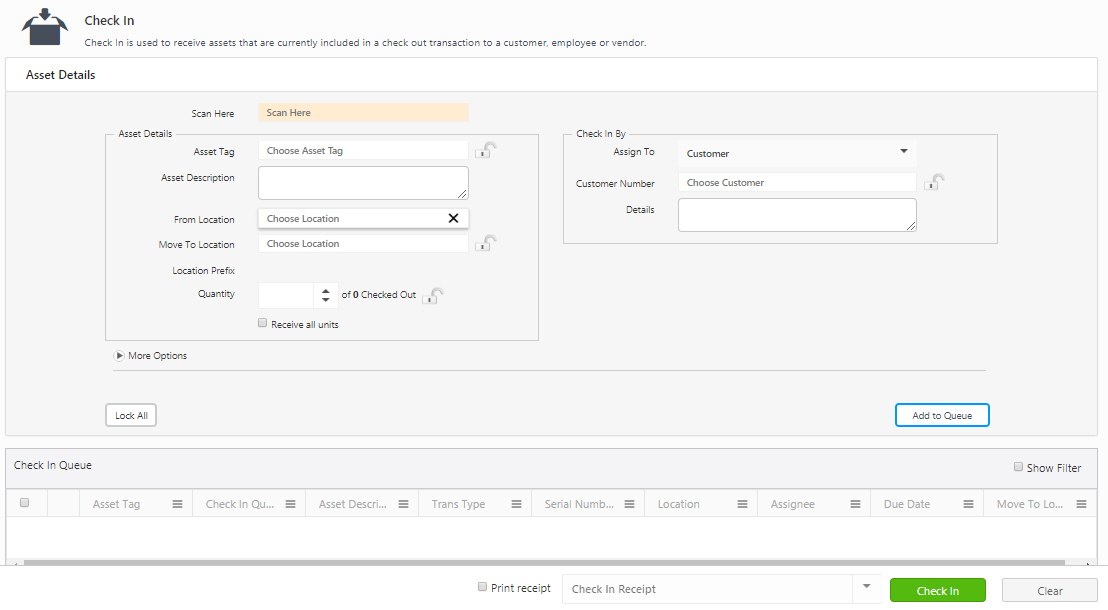
Note that certain fields on this screen have the option to be "locked." When a field is in the locked state, it will preserve the data you've input for future transactions. This feature comes in handy when you're either adding multiple assets to a specific location or checking out several assets to a single customer. To lock a specific field, simply click on the lock icon. If you want to lock all fields with this icon at once, you can use the Lock All button for quick action. Conversely, if you wish to unlock all the fields to allow for new information, you can select Unlock All.
For guidance, click here for information on how to lock fields.
Asset Details section:
- Scan Here - Click on the Scan Here field, then scan an asset tag, location and/or customer/vendor/employee. The Scan Here field functions as a Quick Lookup. You can type in a full or partial Employee/Customer number or an asset tag to perform a search.

Note: If you are scanning the "Scan for Quick Check In" barcode on the Check Out Print Receipt, you must click the tab key on the keyboard to move the assets to the check in queue.
OR
Asset Details
- Asset Tag - Enter/select the asset tag. A Group Widget will appear if the selected asset is a "Group" or an "Asset in a group". Also refer Transact As Whole topic.
Note: If the asset tag already has all the information,i.e. asset details and check-in by details, the asset will automatically move to the Check In Queue.
- If the selected Asset is in a Group and the Transact as Whole feature is enabled for that Group.
- The group containing the asset has the "Transact as Whole" feature enabled. When you select an asset (i.e., a child asset), the asset tag field will automatically select and display the parent asset containing the child asset. A Group Widget icon will appear next to the asset tag field in the checkout queue. Also, you can select the child asset using the group widget and proceed with the check in transaction.
Example - Consider three groups - Container 1, Container 2, and Container 3. Container 1 contains assets FA_1, FA_2, and FA_3.
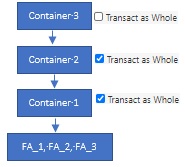
Container 1 and Container 2 have the "Transact as whole" feature enabled.
If you select FA_1, the parent group i.e. Container 2 with the "transact as whole" feature enabled, will get selected.
Note that you can also select FA_1, Container 1, or Container 3 using the group widget.
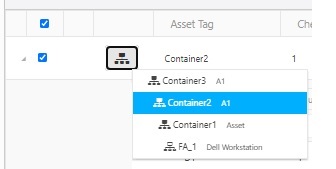
- If the selected Asset is in a Group and Transact as Whole feature is disabled for that Group.
- When you select an asset (i.e., a child asset), and the "Transact as Whole" feature is disabled for the parent asset or group, the asset tag field will display the child asset. It will not swap the child asset with the parent asset. You can also select the parent asset using the Group Widget icon.


- If the selected Asset is a Group and Transact as Whole feature is enabled for the Group.
- The asset that is a group has the "Transact as Whole" feature enabled. When you select an asset that is a group, the asset tag field will verify all the parent assets and select and display the parent group with the "transact as whole" feature enabled. You can select the sub-group/sub-group without sub-items using the Group Widget icon.
Example - Consider three groups - Container 1, Container 2, and Container 3. Container 1 contains assets FA_1, FA_2, and FA_3. Container 1 and Container 2 have the "Transact as whole" feature enabled.

Suppose you selected Container 1, the parent group, i.e., Container 2, with the "transact as whole" feature enabled, will get selected and displayed on the asset tag field. Note that you can also select Container 1, Container 1 with no sub-items, or Container 3 using the group widget.
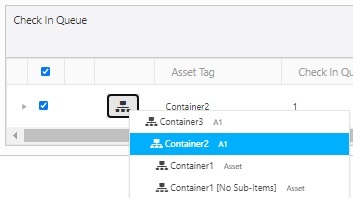
Similarly, if you select Container 2, the asset tag will select Container 2 as the parent "Container 3" has the "transact as whole" feature disabled.

- If the selected Asset is a Group and Transact as Whole" feature is disabled.
- The asset tag field will select the group with no sub-items. You can also select the whole group.
Example - Consider three groups - Container 1, Container 2, and Container 3. Container 1 contains assets FA_1, FA_2, and FA_3. Container 1 and Container 2 have the "Transact as whole" feature enabled. The "Transact as Whole" feature is disabled for Container 3
If you select Container 3, the asset tag will select and display Container 3 with no sub-items. Note that you can also select the whole group.

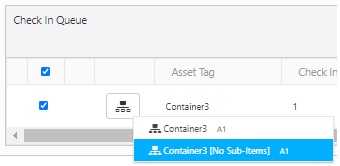
- The From Location will auto-populate. Select the location where the asset needs to be moved in the Move to Location field. Note that The From Location & Move To Location field will display the Site-Location /Site-Parent Location - Location on hover.

- Select the quantity you want to check-in in the Quantity field. The total checked out will appear next to the Quantity field. If you want to check in all checked out units of this asset, select the Receive All Units checkbox.
Check In By
- Select the Assign To (mandatory). The options are Customer, Employee, and Vendor.
- Enter the Customer/Employee/Vendor name.
- If the guardian selected by you has "past due assets," a message will appear after entering/scanning the asset tag that you want to add to the queue. Click on the Yes button if you want to add them; else, click on the No button.
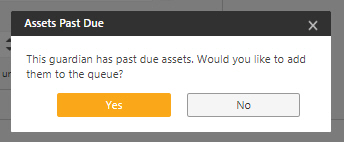
- Enter the Details, if any.
Custom Fields
A custom field for an asset can be added through Form Customization. Refer to the topic Adding Custom Fields on the Form Customization page. Now you can make the custom field visible and/or required for the Transaction screen. If the custom field is visible or required or both, then the Asset Details section of the Check In screen will display the custom field.
- Enter the values in the Custom field.

More Options
- Click on the More Options button and add Notes.
Add to Queue
- Click on the Add to Queue button. The Asset moves to Check In Queue section. In the Check In Queue, there will be a Group Widget icon next to the Asset Tag field. Refer to Step 4 and Group Widget's topic for more details.
Note: The Group Widget prevents users from performing transactions on the same asset/group twice. It will recognize the colliding records and uncheck all the other colliding records, leaving only the most recent record changes checked. Hence, the same asset cannot be added more than once.
- If a parent Group is already added in the grid with the "Transact as Whole" attribute and you add any of its child assets, then the parent asset is unchecked and showing an error sign, and the child asset gets added at the top.
- If a child is already added in the grid and you add the parent asset with the "Transact as Whole" attribute, then the child asset is unchecked and shows an error sign, and the parent asset gets added in the grid at the top.
- If the parent asset is not "transact as whole" you can add both parent and child assets.
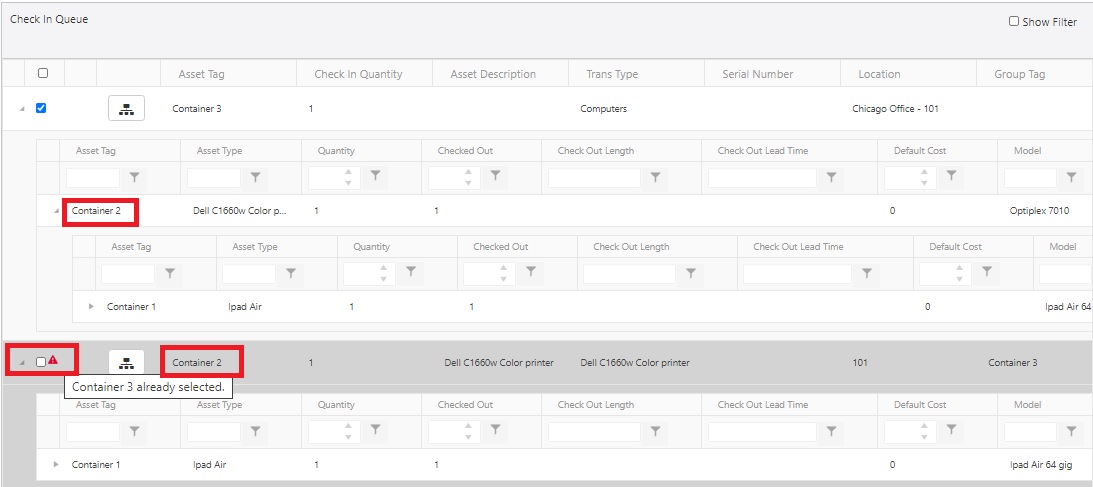
Check In Queue
- You can update - Move to Location, Quantity, or Notes for the Assets that are moved to the Check In Queue section.
- Select the row in the Check In queue, and the selected asset details will appear in the Asset Details section. Update the required details and click on the Update button.
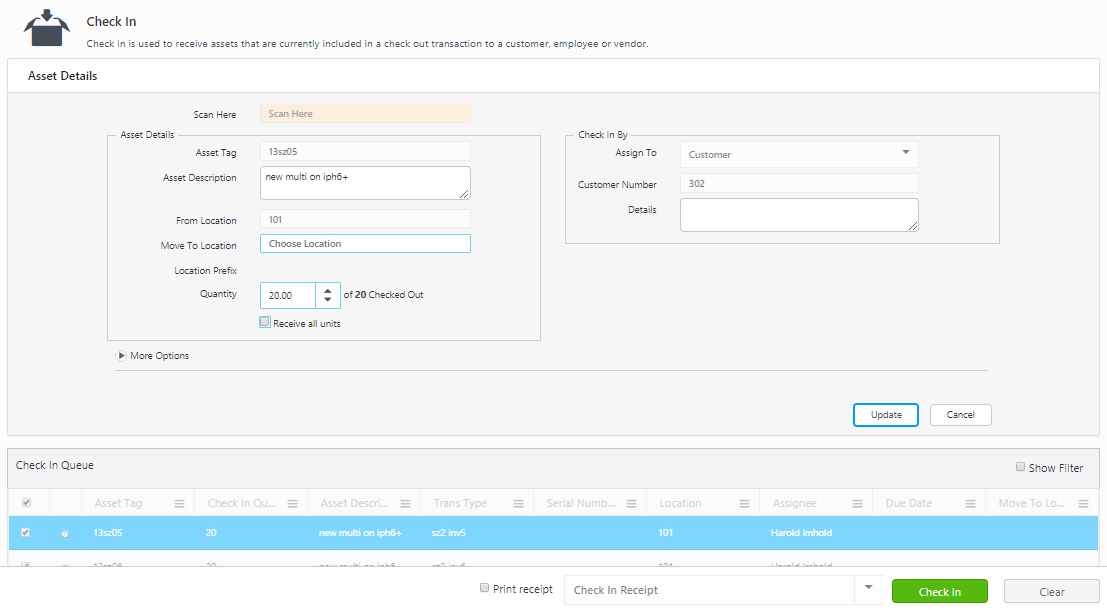
- A message will appear indicating that "Asset Details updated successfully."
- Similarly, you can continue adding more assets to the queue.
Note: Keep in mind that most asset transactions are limited to 50. You can check-in 50 assets at a time. This means that the application will allow you to check in 50 assets at a time. Once the 50 transactions are submitted, you can check in the next 50 transactions before submitting again.
- When you have finished adding assets, ensure all assets you want to check in are "checked" in the Check In Queue.
Note: You MUST select the assets you want to check-in on the "Check In Asset Queue". All the Assets in the Queue are selected by default.
- Select the Print Receipt checkbox if you want to print the receipt of this transaction. The Print Receipt checkbox will be checked (read-only) if the Always Print receipt option is enabled in the settings.
Note: If the pop-ups are blocked, and you cannot view the print receipt, refer to Popups and Redirects to allow pop-ups and to view the print receipt.
- Click on the Check In button.
- A message will appear indicating that "Asset is included in a Check In transaction," and a Print Receipt will be generated (if checked before Check In transaction).



![]()















